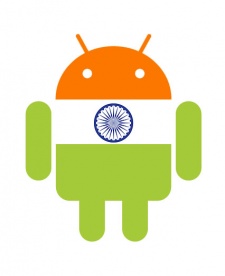As the games industry advances in the coming years, we can fully expect the west to be pushing the boundaries of innovation.
After all, 'we' invented the World Wide Web, ARM architecture, and the iPhone.
We’ve proven the UK isn’t just some adorable village run by Paddington Bear and the US a giant Mickey Mouse theme park.
But PocketGamer.biz spent last week in Bangalore where we had our eyes opened to the Indian games development scene.
A recent report predicted that the Indian video games market will exceed $2.8 billion by 2018 – all this from a country that has traditionally been perceived as a “cost center” and its gamer community too small to be of significance.
The proliferation of low cost Android devices has opened up a whole new generation of gamers across India some of who are now also becoming first-generation developers.
So in a culture that celebrates mobile gaming more than PC or console, are there any lessons that Indian developers can teach us?
Fresh-faced
The Indian industry’s newness is in some ways its greatest strength. For one thing, it’s had enough time to watch the western games market and learn how not to make the mistakes that we’ve made.
“As a country, we’ve learned by watching the global games industry grow up around us,” Reliance Games' CEO Manish Agarwal told us.

“Now we’re ready to grow, and make some mistakes of our own.”
This spirit of adventure permeated the games that we saw at Pocket Gamer Connects Bangalore. These are games focused on creativity, not profit, and innovation, not cloning. While the western user base covets the bells and whistles of design, Indian gamers are not as selective with respect to a game’s visual quality.
Now we’re ready to grow, and make some mistakes of our ownManish Agarwa
If the game’s mechanics are fun enough and its core concept strong, players will try it out without judging it by its cover.
For example, Teen Patti is an online casino game with basic visuals, but a solid core premise that targets the Indian market’s sensibilities. Despite looks, it ranks third in Google Play’s top grossing games charts for India.
It means that Indian developers are producing games with a gameplay-first focus. Their ideas are sharp and their mechanics sharper, in contrast to games that prize style over substance.
Creativity first
That’s not to say that all the games being born of India don’t look good. Indian game development seems focused on creativity, and that spills through into visuals too. An online competitive FPS we saw called Mask Gun had some of the best graphics we’d seen on mobile – think Counter-Strike but in the palm of your hand.
This creative focus pushes monetisation concerns to one side, and maybe that’s not a bad thing. The Indian game developers we met were alight with a passion to make games for the love of the craft, not the pursuit of profit, and it showed through in their work.
We saw an interactive story experience, Picto, which explores domestic violence from several viewpoints; A complicated puzzler called Unwynd that rewards perseverance with impressively deep gameplay; and Catcher in the Sky, a gripping blast through space that sees the player use swipes and taps to protect a rocket careering into the heavens.

In the west’s obsession with monetisation, more and more games are being made with a “profit first, imagination second” mentality. The developers we met are fresh to designing games, and are re-energising their IPs with new approaches unhindered by cash guzzling shareholders.
Of course, having an eye on how you’re going to make money from your game and integrating those monetization mechanics seamlessly into the experience is important. Still, there was something refreshing about developers creating games simply for the love of gaming – and the results matched anything we’d seen at the GDC 2015 Big Indie Pitch.
The Indian games market has only made it a few steps down the path of progress; it’s still peeling off the cellophane, still unfolding itself from the box.
Problems such as weak infrastructure and a consumer suspicion of ecommerce need to be addressed, and that’s no mean feat. But the country’s fearless embrace of experimentation is how the west used to serve up games – in great steaming bowls of lovingly created surprises.
Maybe it’s time we remembered that again.

















